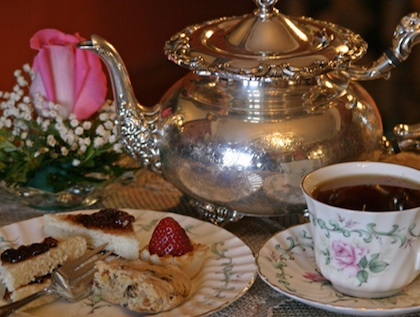
I hate to be the bearer of bad news, but if you’ve used the term “high tea” in the 21st century, you’ve probably been a victim of its misleading name. This tea is not what it seems.
So what precisely is “high tea” then? Well, it’s what might be a little more commonly known to us as “dinner”. Specifically, a heavier meal eaten later in the evening after the working class had come home. Yes, my friends, I said working class. Not very Downton Abbey, is it? English sure is a funny language.
By the way, I kind of tricked you. This article isn’t really about high tea, but what we’re actually referring to when we say that. The china, elegant gloves, sugar cubes, and light delectables are part of what is really known as “afternoon tea”.
The story is that the Duchess of Bedford would feel a little down on her energy in the mid-afternoon, so in 1840, she began having tea and snacks brought to tide her over until her fashionably-late dinner, eventually inviting some friends to join her. It caught on. People began wearing more formal attire and what we think of now as the traditional English tea party was started.
This next bit might feel a little more blasphemous to our media-saturated sensibilities. You see, the afternoon tea has another name: “Low tea”. I know, I know. How on earth could something that is the very symbol of high society be called such a thing? Did I mention English is a funny language? It’s a hypothesis that the names “high tea” and “low tea” were derived from the level of the tables upon which the meal or snack was enjoyed. Dinner is eaten on higher tables (thus “high tea”), whereas the snacks you consume with your tea rest on things like coffee tables, which are lower to the ground (thus “low tea”).
Both the origins and the explanation of the name, however, should probably be taken with a grain or two of salt.
Speaking of food, common nibbles served for afternoon tea are “biscuits” (cookies), sandwiches (like cucumber or egg), and dessert dishes. There are different kinds of afternoon teas, as well, depending on what and how you serve.
Put on a record and move your tables to one end of the room, and you’ve got yourself a tea dance.
A “cream tea”, as another example, requires some clotted cream and jam on top of your “scones”, but we are not talking the ones at your coffee house. This type of scone is like the (sometimes sweeter) cousin of the southern-style biscuit, and can include ingredients like cheese or raisins.
(You may have noticed a little quirk of the relationship between British and American English right there: Cookies = “Biscuits”, Biscuits = “Scones”, Scones = “Rock Cake”. English = Funny.)
Whatever you call it, the afternoon tea can be a delightful bit of escapism, a mid-day pick-me-up, or just an excuse to get together with friends. Or it can be all three! Experience the afternoon tea – join us for Watch Chains and Lace this summer at the historic Pleasant Home in Oak Park every third Sunday.

There are no voices yet... Post-script us a message below, won't you?